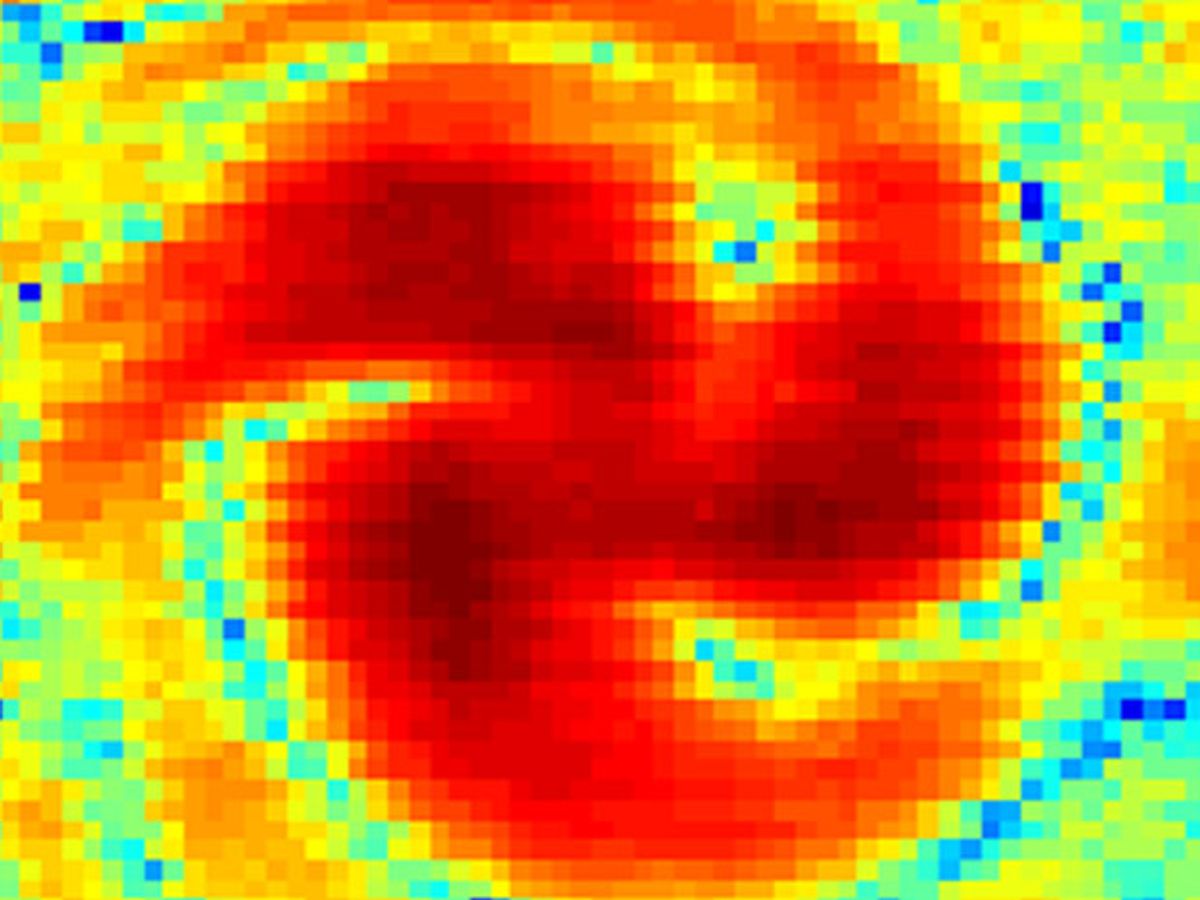A team led by engineers at the University of Southern California has sent multiple channels of data over a single frequency by twisting them together into a beam resembling a piece of fusilli pasta. By combining several polarized beams carrying information into a single spiraled beam, the team was able to send up to 32 gigabits per second across 2.5 meters of open air, a rate around 30 times as fast as an LTE wireless connection.
The high data rate was made possible through a technique known as orbital angular momentum (OAM) multiplexing, says USC electrical engineering professor Alan Willner, who partnered with researchers from the University of Glasgow and Tel Aviv University on the experiment.
A property of electromagnetic waves first identified in the 1990s, OAM can be harnessed to let multiple channels of information ride along a single frequency. “I could have a wave that twists slowly and one that twists a little faster, and those waves are now orthogonal to one another,” Willner says. “If you put them together and send them spatially co-located through the same medium, you have doubled your capacity.”
Willner and others have previously demonstrated the twisting technique with beams of light, reaching data transmission speeds of 2.56 terabits per second through the air in 2012 and 1.6 Tb/s over optical fiber in 2013. Proving the technology works at high data rates with radio waves is important, because those frequencies are less affected by obstacles and atmospheric conditions than optics and could have broader commercial applications.
Willner and his team used four antennas to send eight channels of data. Those beams of data were sent through specially shaped “spiral phase plates,” plastic plates that don’t absorb the beams but do cause them to change their shape, twisting them slightly. The twisted waves are then gathered by a multiplexer and sent through a single transmitter aperture. Since each wave has a slightly different OAM, they can travel along a shared axis without interfering with one another.
The combined beam, which takes on a helical shape, travels through another aperture at the receiver, after which it is split back into four beams by a demultiplexer. The four beams then pass through another set of spiral phase plates. These plates are inverted versions of the first set, which undo the initial twisting and prepare the waves to deliver their data payload.
This isn’t the first time radio waves have been used to demonstrate the potential of OAM. Italian and Swedish researchers in 2011 used the same principles to send a pair of radio waves sharing a single frequency between two islands in Venice. At the time, some communications engineers criticized that work, suggesting it was not significantly different than existing multiple-input, multiple-output (MIMO) techniques.
Willner says this latest study demonstrates that there are clear implementation differences between conventional MIMO and OAM multiplexing. MIMO sends different streams of data from different antennas broadcasting on the same frequency and decodes the inevitable cross talk on the receiving end using digital signal processing. OAM multiplexing sends multiple channels of information along a single beam without any interference between them. That means once the phase plate at the receiver unwinds the helical beam into its component channels, they don’t have to undergo further cleanup.
>One of OAM radio’s early critics, Lund University radio-systems professor Ove Edfors, remains unconvinced, however. While he doesn’t question Willner’s results, Edfors remains incredulous that radio-based OAM could be made practical for long-range communications. Without the assistance of impractically large antennas to transmit and receive them over long distances, Edfors says now, “signals carried on…OAM components rapidly become useless from a communication point of view.”
Fabrizio Tamburini, one of the scientists behind the 2012 Venice OAM experiment, sees a lot of promise in the latest work, saying that “very good ideas can come from it.” Tamburini is now working on ways to refine OAM for use in telecommunications and other industries.
If OAM pans out, the technology could be adopted in places where high-speed, line-of-sight wireless connections are in demand, such as for wireless backhaul in cellular networks, suggests Willner. OAM could be a good fit for transmitting data among “a dense network of small base stations without...the stringing of fiber to connect them to the core network,” he says. He and USC colleague Andy Molisch also see the potential for OAM in data centers. “With better equipment, [transmission rates] could go much higher,” Willner says. “A radio backhaul like that could be a huge pipe for data centers or building-to-building connections.”
OAM techniques might also be used in other fields, such as microscopy, Willner says. “There are potential applications outside of communications. We’re going to continue learning how to tailor and manipulate the structure of waves in ways we’ve never thought of before.”
This article was updated on 16 October 2014.
This story was corrected on 13 July 2016. Twisted radio wave experiments were conducted in 2011 not 2012.



